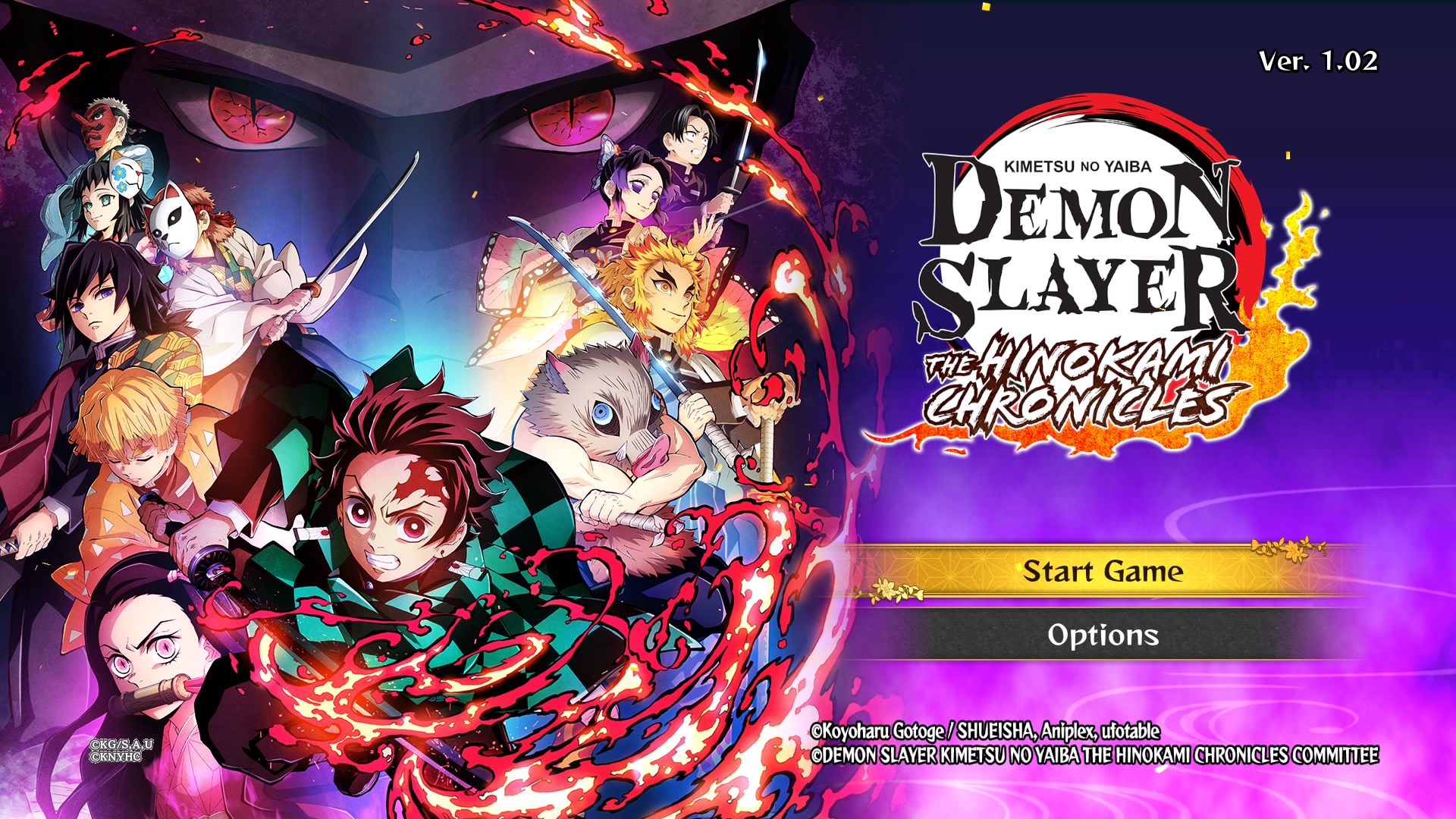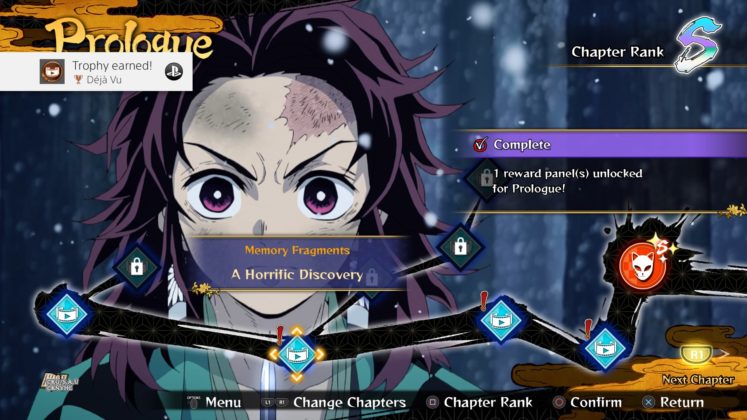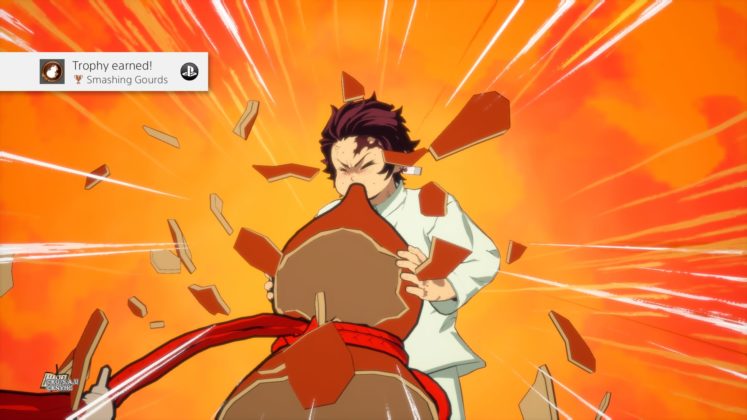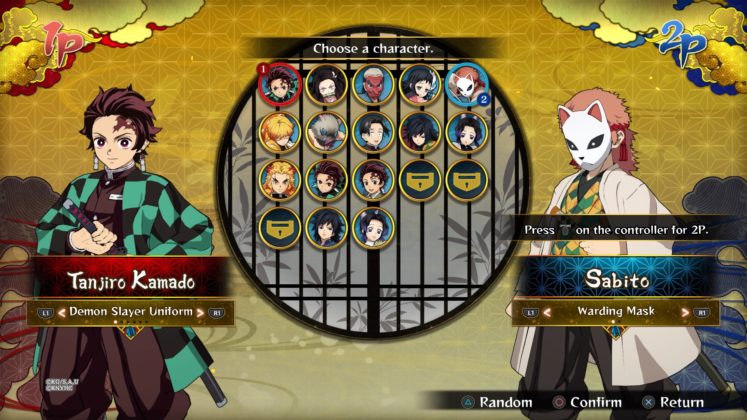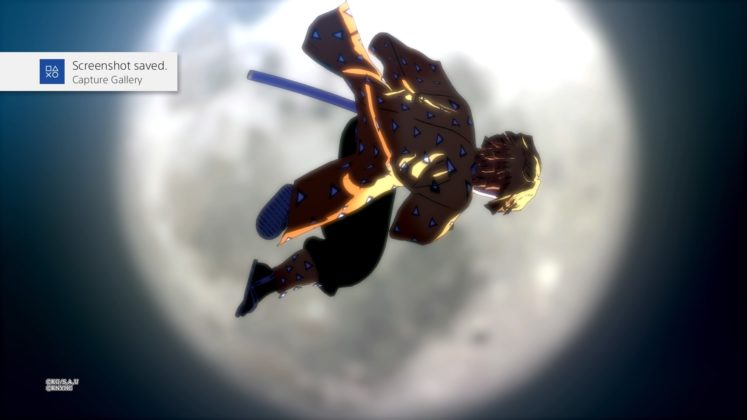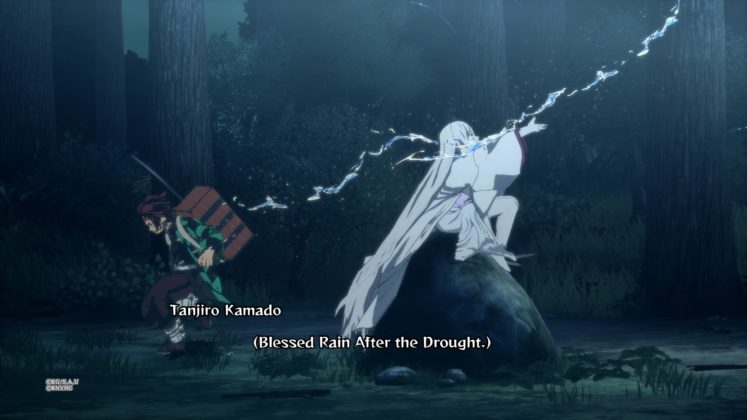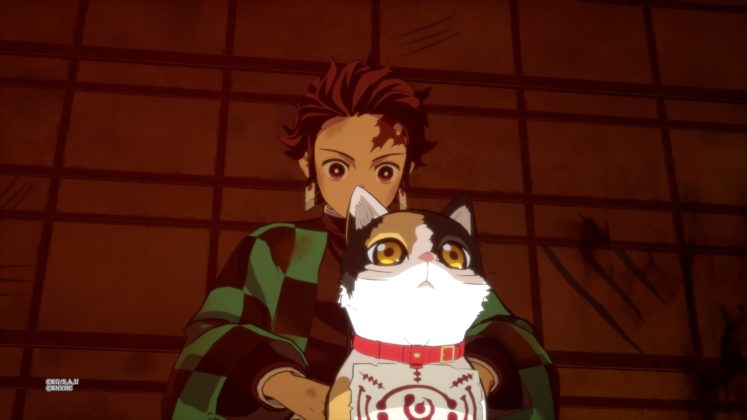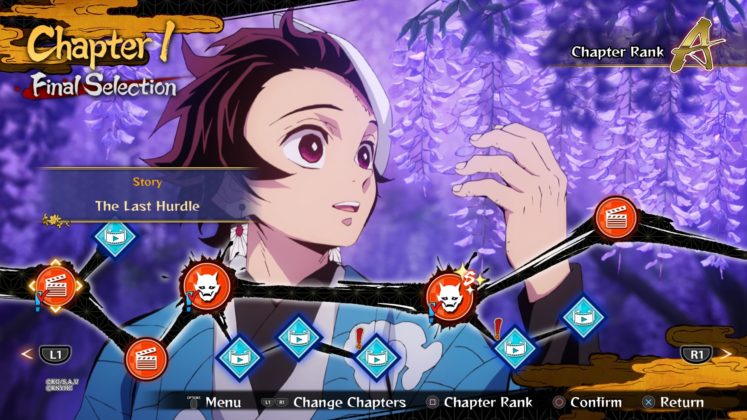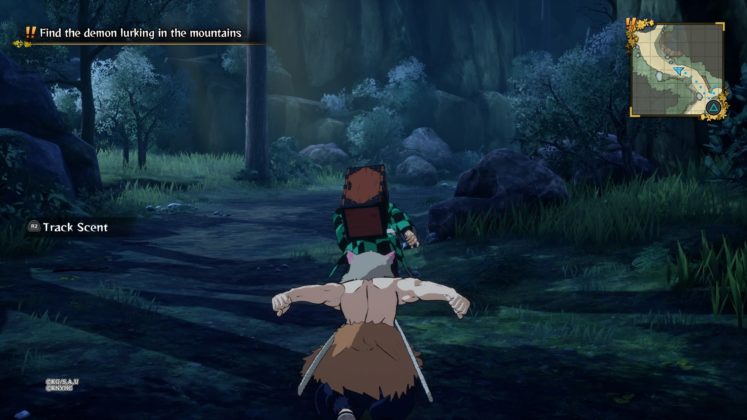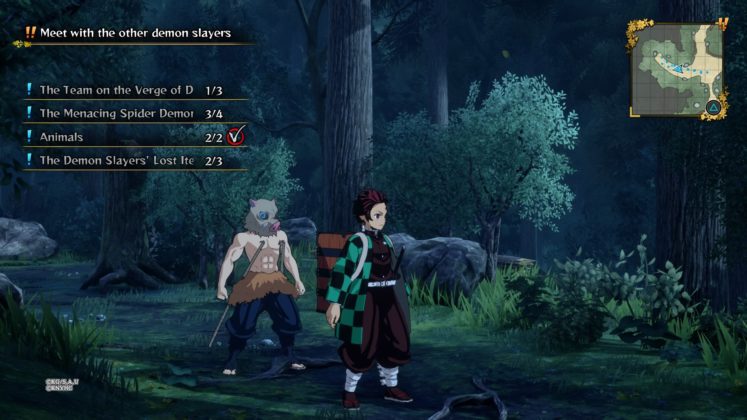Developed by: CyberConnect2
Published by: SEGA
Platforms: PlayStation 5, Xbox Series, PlayStation 4, Xbox One, and PC
Reviewed on: PlayStation 4
For me, Demon Slayer is one of the most exhilarating, emotional ride short burst anime/manga series to date with its awe-inspiring Japanese art visuals, elevating soundtracks, and a pretty memorable storyline. It seemed rather abrupt to me that the series ended rather earlier than expected on May 18th, 2020, and that the anime series is still catching up. My first impression of the game trailers was that it focuses heavily on the combat and Japanese art style of the series. The challenge, however, is not only to make it fun and challenging but to maintain the emotional consistency of the show. Here’s my review of Demon Slayer – Kimetsu no Yaiba – The Hinokami Chronicles.
There are a few sequences in the game that may revolve loosely around suicidal tendencies, so be aware before playing.
Storyline
For those who are new to the series, Demon Slayer’s story starts off with a tragedy. A young man by the name of Tanjiro came back from chores only to find his whole family massacred by a demon. He also discovers that his sister, Nezuko was turned into a demon as well and attempted to consume him as she awoke. While Tanjiro fends and pleads for his life, a nearby sword-wielding demon slayer attempts to take Tanjiro’s sister’s life which Tanjiro begs not to do.
To me, this moment in the manga/anime was just added in-game as still images as a recap, which to me lost the meaning of an introduction to the story, which was why I picked up the manga and read it through to the end. Rather, the game skips right to manga chapter 5 as Tanjiro is training in order to become a Demon Slayer to make his little sister human again. This sets up the expectation that the game cherry-picks glorious moments of the anime series to be playable.
Throughout the story, the main moments are told by cutscenes, but at the end of each cutscene, there is an excessive amount of Demon Slayer – Kimetsu no Yaiba – The Hinokami Chronicles logo popping up.
The rest of the story is filled out by collectibles and still images, which the voice actors will fill out using narrative storytelling. That being said, I feel that the recap still images should also include never-before-seen perspectives from other Demon Slayers or the Demons themselves to make this an ideal and rewarding experience.
Art and Sounds
In terms of the art of the game, the graphics are the main meat that is consistent throughout. The art mixes both 3D anime graphics with Ukiyo-e Japanese art style that is all flashy and exuberant like how the anime is. Tanjiro has a heightened sense of smell that is portrayed visually through the exploration mode in-game, resembling airy DNA strands to me as a way to interact and follow through. I find that an interesting concept, but it was simply used to get me from point A to point B; why not use it to detect and confront enemy demons in common clothing? Or hidden in the bushes or the environment.
While the voice acting was mostly superb as expected, there were a few instances where Tanjiro’s voice-over sounded distant in an in-game cut-scene. The music begins mostly with anime-like generic songs before shining into full anime glory at the end.
Gameplay (Exploration)
As mentioned above, there is an exploration aspect in the game where players control Tanjiro or other characters to navigate around the area before triggering their main quest. There are a number of aspects that could be added to the environment to make it even more dynamic, such as NPC interactions, movements (need sprinting button), or environmental noises. The overall experience felt really generic like an MMO (Multiplayer), draggy, and talking to NPC’s with no flavorful lines. Player characters are just casually jogging around town in a linear fashion and mainly use Tanjiros heightened sense of smell (R2 button) to just follow the arrow. There will be no side activities, jumping around town, or side stories to explore – which is a shame really. The exploration mode also places memory fragments within the environment, which can be seen on the map itself, and Kimetsu points that can be redeemed to unlock rewards such as cutscenes, skins, music, profiles, and voice quotes. As a result, this serves as more of an aesthetic collection. To make it extra special, these rewards on the field should be weeded out by Tanjiro’s sense of smell in the environment or Zenitsu’s sense of hearing.
As well, there were one or two minigames that involved pressing rhythm buttons that did not seem integrated into the environment, and the actions involved were muffled.
Gameplay Combat
This 3D Samurai fighter gameplay is surprisingly, even more, simpler than My Hero One’s Justice with only two buttons of attack types, a dodge and block/parry. Each character has only one or two types of combos by pressing the light attack button and at any moment pressing the skill attack button to disperse their breathtaking attacks, building up the bar to either Surge Boost(L2 button) or pressing the R2 button for the ultimate moves. As much as it feels good to use fluid combos as your favourite characters, there are no other variations to enhance the flavour, such as adding salt and pepper to my food. By pressing the L1 button during combat, other characters will either attack for you or carry you out of an enemy combo, or switch places as a playable character. To me, this is the most versatile and useful support assist feature I’ve seen in an anime fighting game, however, I wish it could also open up enemies to my combo attacks then that would be perfect.
With that being said, there are QTE (Quick Time Events) moments in the game but it only occurs as the enemy NPC is close to death as a finishing blow. There should be moments of QTE in between combat segments to defend against the demon’s attacks, that would make the moment even more engaging.
Story Mode’s numerous enemy demon fights and boss battles are too predictable. As each enemy gets back up or pushes you away, they become invulnerable in their red-hardened bodies until out of breath, opening up the opportunity for yet another combo attack. Each of the enemy’s attacks is also predictable as they visually show their striking zone, allowing me to dodge or block before it happens. It felt like I was playing tutorials throughout the game and things only started getting better near the end of the game in terms of challenge and pacing of combat. Another issue I came across is a small combo timer that stops players from spamming combos which is totally unnecessary because combos can be limited by the character’s breath meter below the HP (Health)bar in itself.
As an alternative, I would suggest making Tanjiro’s sense of smell useful in combat as well, to see where enemies are hiding, hidden ambush attacks, and weak spots in the middle of battle instead of only focusing on exploration. The breath meter may also be built up this way instead of standing still while fighting.
What I Liked
- Voice acting.
- 3D animated cutscenes, animation, and art.
- Varied Enemy Demon Design.
- Flashy attack cinematic finishers and combos.
- Songs that build up at the end reflect the anime moments.
- Simple Combat with easy-to-pull-off combos.
- Useful Assist mechanics with other characters.
- Pretty fun online PVP combat
What I Think Can Be Improved On
- Missing some key elements story reflected as recap still images.
- Always the same generic AI design villains to fight against, predictable patterns.
- Predictable enemies and bosses fight visual attack cones.
- My parry and blocks are either slow to connect or timing out.
- One or two minigames that felt rather detached.
- Nitpicking wise some background art such as a flat looking sword held by Inosuke (Boar Head) and background trees.
- QTE moments should not focus only at the end of combat.
- Flashy Combos but less varied in terms of combo variations.
- Training Mode is merely checking a bunch of checklists with the characters of your choice instead of learning something new.
- The combo bar limit is an unnecessary inclusion when you have the breath meter. Perhaps some combo allows you to breathe in more combos perhaps?.
- Bland-wide level design in both exploration and combat, vibrant but lifeless background, with no interest in NPC’s or movements in the environment.
- In terms of cinematic attacks, each character has only one, which, to my mind, is not enough; there should be a second Ultimate attack nearing death to depict desperation.
- Tie in more story elements such as diff perspectives from NPCs, demons, and other demon slayers like the manga side stories “Stories of Water and Flame,”.
- While in exploration mode, a bug tends to stutter a bit with a small twist of the analog stick, giving characters a jerky motion while running in-game.
- Unnecessary need to put the game logo after most cutscenes.
Favourite characters to play as
In addition to Zenitsu Agatsuma’s cool appearance in combat, he is also hilarious in the exploration segment as he complains and gets scared by any environment he encounters.
Verdict
The entire story of Demon Slayer – Kimetsu no Yaiba – The Hinokami Chronicles felt more like a recap and pleasing to existing fans, rather than introducing new players to the gripping tale. With over 5-10 hours of gameplay span from training all the way to the end of the Mugen Train (Anime Season one). I feel that the game nailed translating the visual aspects throughout, character design, combat, and voice acting. Every other aspect felt short, linearly casual, or had a lacklustre attempt to translate what it was really like to play as a Demon Slayer in the same world. In light of the manga ending earlier, more resources should be shared by and for fans to make gameplay, perspectives, and story elements more compelling, rather than merely adding more skins with no replaying factors in meaningful ways.
